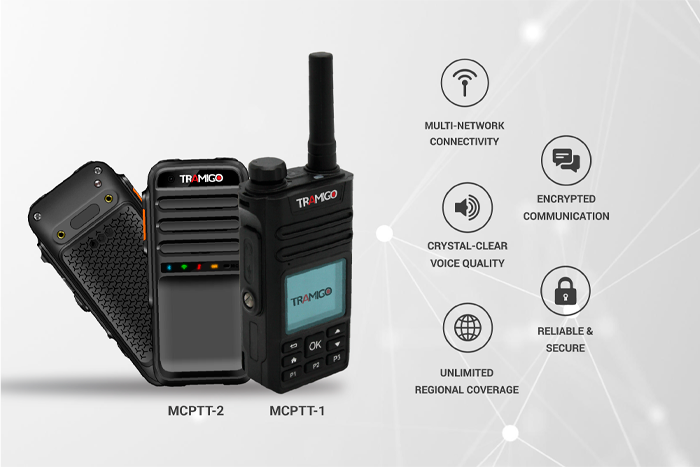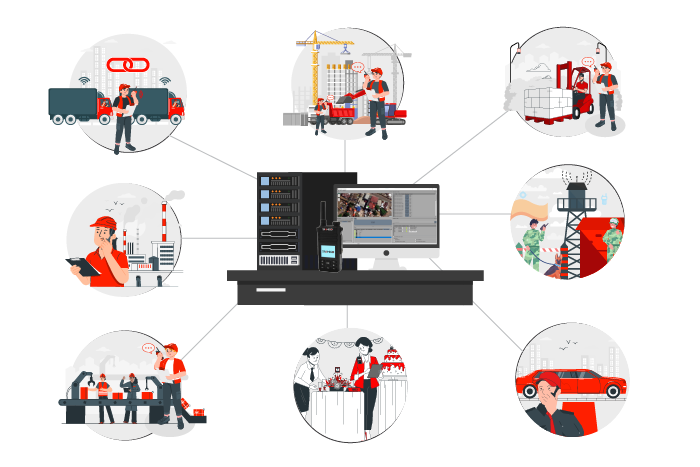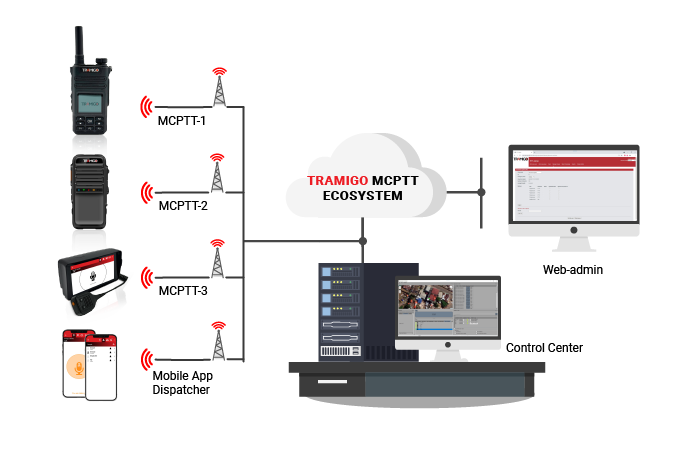
Understanding Push-to-talk over Cellular
In today’s fast-paced environment, clear and efficient communication is essential. Push-to-Talk Over Cellular (PoC) technology is transforming communication across diverse industries by offering a real-time solution that transcends the limitations of traditional methods.
Since the late 19th century, radio communication has been serving us with Morse code used as the way to transmit messages. The early 20th century saw the development of the first “walkie-talkie” for military applications. Since then, two-way radio technology has undergone significant advancements, providing reliable communication for nearly a century. Recent years have witnessed a groundbreaking invention: the merging of two-way radios with the power and reach of cellular networks. This innovative technology, often referred to as Push-to-Talk Over Cellular (PoC) or LTE/PoC radios, is revolutionizing communication by offering a robust and versatile solution for the modern era.
What is a PoC Radio?
Push-to-Talk Over Cellular (PoC or PTToC) is an innovative leap from traditional PTT. Unlike traditional two-way radios rely on dedicated frequencies, PoC radios leverage existing mobile networks. This gives them a major advantage: nationwide, regional and even global coverage. Equipped with multi-network SIM cards or eSIM, PoC radios automatically connect to the strongest available signal, ensuring crystal-clear communication for your team, no matter where they roam. This makes PoC perfect for companies with geographically dispersed staff or those who travel frequently.
PoC vs Traditional two-way radios
While traditional two-way radios have long been a reliable communication solution, Push-to-Talk Over Cellular (PoC) technology offers a compelling alternative. Here’s a breakdown of both options to help you choose the best fit for your needs:
Traditional two-way radios
Traditional two-way radios offer a dependable communication solution, especially for those working in remote locations or areas with limited cellular coverage. They operate using dedicated radio frequencies, independent of any mobile network. Here are the two main types:
- Unlicensed radios (Walkie-talkies):
- Operate on free, shared frequencies (PMR446). Can be used right out of the box
- Ideal for short-range communication in a small group or personal use like hiking, sporting events.
- Drawbacks include limited range, interference, and busy channels due to shared frequencies.
- Licensed radios:
- Require permits (like Ofcom in the UK) and have specific designated frequencies.
- Can cover larger areas compared to unlicensed radios, with options for repeaters to boost signal strength. .
- Operate on designated frequencies, reducing interference and ensuring privacy.
PoC radios
PoC radios relies on cellular data networks (3G, 4G, 5G, LTE) for communication, offering a broader coverage wherever there’s a cellular signal:
- Crystal-clear calls across vast distances, ideal for geographically dispersed teams.
- Lower infrastructure investment compared to licensed radios.
- Can connect to dispatch applications for centralized communication.
- Simple setup and requires no license.

Industries Leveraging PoC Solutions
PoC solutions are widely applied in various industries to respond to the demand for efficient communication. Below are the most common sectors that leverage PoC solutions.
- Military: Both in operational theatres and non-operational settings, the military benefits from PoC’s secure and instantaneous communication, crucial for coordination and operational success.
- Transportation and Logistics: From railways and airports to shipping and automotive services, PoC facilitates seamless coordination, essential for managing complex logistics and ensuring timely operations.
- Distribution and Warehousing: In the fast-paced environment of warehousing, PoC enables pickers and managers to communicate hands-free, improving efficiency and safety in these bustling settings.
- Manufacturing: Particularly in smart factory projects, PoC enhances connectivity between different parts of the manufacturing process, leading to increased productivity and better coordination.
- Mining, Oil, and Gas: In remote and often harsh environments, PoC stands as a reliable communication tool, ensuring workers stay connected and safe.
- Healthcare: On large campuses like hospitals, PoC facilitates quick communication among medical staff, essential for patient care and emergency response.
- Event Services: At convention centers and stadiums, PoC helps in coordinating large events, managing staff, and ensuring events run smoothly.
- Construction: For large-scale infrastructure builds or housing developments, PoC aids in efficient project management and worker safety.
- Utilities: Across energy, water, waste management, and more, PoC ensures field workers stay connected, enhancing service reliability and operational efficiency.
- Field Service Workers: For those in maintenance or engineering, PoC provides a direct line for immediate support and coordination.
- Retail: In large stores, PoC enhances staff communication, leading to better customer service and store management.
- Gaming and Hospitality: In casinos and hotels, PoC is crucial for staff coordination, ensuring guest satisfaction and operational efficiency.
- Facilities Management: For shopping centers and commercial buildings, PoC provides a seamless communication channel for management and maintenance staff.
- Public Safety: For first responders like police, ambulance services, and fire brigades, PoC is a game-changer. It enables them to coordinate efficiently, respond to emergencies faster, and communicate reliably in critical situations.

The Tramigo MCPTT Complete Ecosystem
Tramigo’s MCPTT solution adopts PoC method while offering the possibility to host the solution locally for enhanced security.
We are a single provider who provides a holistic communication strategy that integrates hardware, software, connectivity, and services. Here’s a deeper look into our robust ecosystem:
- Push-to-Talk Devices (MCPTT-1, MCPTT-2 and MCPTT-3): Designed to withstand rough environments, the devices are water-resistant and dustproof, ensuring durability and reliability even in the most challenging conditions.
- Mobile App dispatcher: This app transforms any smartphone into a high-functioning walkie-talkie, enabling seamless integration of mobile technology into the communication network.
- Control center with Windows dispatcher: This central hub allows for the tracking of device locations and enables communication directly from a PC. It’s an essential tool for centralizing operations and maintaining oversight of field communications.
- Web-admin: This tool allows administrators to manage user levels, create groups, and oversee communications, ensuring organized and efficient team interactions.
- Multi-network connectivity: Tramigo’s multi-network connectivity ensures that users are always connected to the best available network, minimizing the risk of communication disruptions, which is crucial in mission-critical operations.
- Personalized support and services: Tramigo provides technical support, and custom project assistance, ensuring that every aspect of the communication system is optimized for the user’s specific needs.

For organizations seeking to elevate their communication capabilities, exploring Tramigo’s MCPTT solutions is a step in the right direction. Contact Tramigo today for a tailored solution that aligns with your unique operational needs and step into a world of seamless, uninterrupted communication.